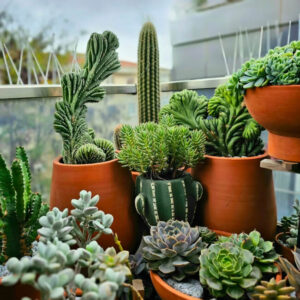The vegetable garden is a sacred site for most gardeners. It encompasses much of our raison d’être for gardening: growing our own produce, seed-raising and collecting, composting and soil management.
Our desire for self-sustainability, even if it is only some seasonal carrots, makes all the effort – and it requires much being the most labour intensive garden activity – appear worthwhile. For some, growing vegetables comes easy and their success rate is enviable.
For the rest of us, it takes a lot of trial and error, wasted seeds and frustrated hair-pulling as the garden pests enjoy the tastiest morsels. For beginners, though, it can be a little daunting knowing how to start and which way is up.
So, here are a few answers that may help and hopefully point you in the right direction.
More...

What is a Vegetable Garden?
Obviously it’s a garden where vegetables are planted, nurtured and harvested. It offers the home gardener a place to grow their own produce and realise a type of self-sufficiency that many farmers would have enjoyed in years gone by.
Some gardeners utilise their veggie patch year round while others just use it to grow spring and summer vegetables. Regardless of how it’s used, benefiting from your own homegrown produce is a pleasure few enjoy these days – but it is coming back into vogue.
Different Ways to Setup a Vegetable Garden
There’s more to the vegetable garden than the 6 x 6 ft plot of land. While most gardeners have cordoned off a spot within their garden solely to grow vegetables this method is waning in popularity.
The reasons are many but they primarily focus on gardeners realising that their garden styles need to be more efficient with the limited resources available. Here are some methods that are gaining acceptance amongst the gardening community;
Permaculture
While certainly not a new method, permaculture utilises all the available land on offer. It encompasses companion planting, strategic placement of trees and shrubs to buffer against extreme weather conditions and the vegetables are usually grown amongst flowering ornamentals.
In some cases, they’re grown instead of traditional flowering plants and use the foliage and flowers from the vegetables to create aesthetic appeal.
Hydroponics/Aquaponics
These two methods are also gaining in popularity. Hydroponics is the process of growing vegetables in nutrient-rich fluids while aquaponics uses fresh-water fish to provide the nutrients for the veggies.
Grow Bags
Growing vegetables in grow bags is also taking off for gardeners with limited space. Grow bags utilise height in the garden where traditionally it hasn’t been used for producing foodstuffs.
Container Vegetables
Growing vegetables in containers has been popularised by high-density dwellers because they just don’t have the soil available to plant their own veggies. Containers can be just as successful but often are more laborious than traditional vegetable gardens.
Indoor Vegetable Garden
rowing veggies indoors is getting some attention of late especially for cold-climate gardeners who don’t get many warm months and where snow or frosts are climatic problems.


Get Your Free Guide:
Master Growing Australian Natives eBook
A Must Have Complete Guide for Every Australian Garden
Get Your Free Guide:
Master Growing Australian Natives eBook
A Must Have Complete Guide for Every Australian Garden
Allotments
The final alternative, allotments, are great for people with no garden space at all. These are usually allotted to gardeners as part of a community plot and allow gardeners to grow their own produce or share with others in the same plot.
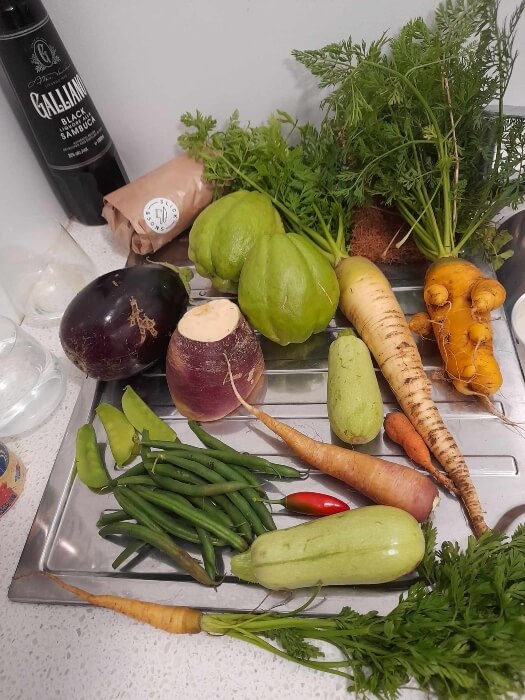
Benefits of Vegetable Gardens
- Cheap – the obvious reason many turn to growing their own vegetables is to save money. Plus, once your vegetable garden is flourishing you can collect your own seeds for future seasons and it becomes even cheaper.
- Healthier for you and your family – Growing your own produce you can rest assured knowing that they have never been contaminated with inorganic pesticides and growth hormones. Growing vegetables can also be good for your body physically as it is quite a laborious activity.
- Environmental benefits – these can’t be applauded enough. Growing your own veggies adds to the environment where mass-grown vegetables always subtract. There are less pesticides, herbicides, inorganic fertilisers and water consumption can usually be reduced too.
Different Types of Vegetables to Grow in Australia
Easiest Vegetables to Grow for Beginners
You don’t need years of experience (or any experience for that matter!) to learn how to grow vegetables. Here are some of the easiest vegetables to grow in your backyard:
Leafy Greens
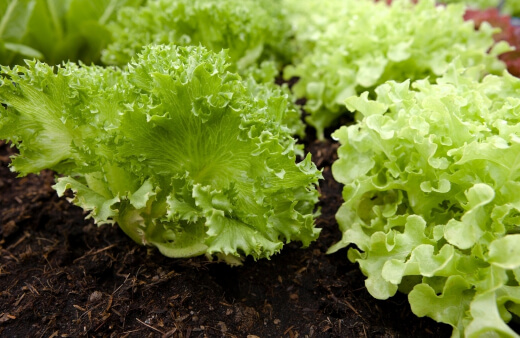
Growing lettuce and other leafy greens, including endives, is as simple as it gets. The seeds are uncomplicated little survivors – they can even make it through a light frost.
They don’t need a ton of sun, either. Give each seed a few inches to grow (especially if you’re planting more solid-headed breeds), and bury about ½ inch below the soil’s surface.
The soil should be moist but not overly damp. You’ll need to check for bugs, but there’s really nothing else to it – just clip the leaves (they come up quickly!), wash and enjoy.
The plants should yield throughout the season so stock up on your salad dressings!
Tomatoes
Growing your own tomato garden is relatively easy. They can be used to create soups, sauces or simple sandwich toppings.To grow them, you need only a small amount of space and some nice, nutritious soil. Buy a baby plant, pop it in the ground and water regularly. That’s it.
Check for bugs and discard any infested parts of your plants. After a couple of weeks, they should begin to sprout and over time they should grow into full-grown tomato trees.
Expect to fill your countertops with these juicy reds by the end of the season. You can learn more about growing your own tomatoes at home by watching the tutorial below.
Zucchini
Zucchini is a low maintenance garden option that yields a lot of food. They don’t like the cold, so plant your seeds no sooner than two weeks after the spring’s last frost.
Your seeds should be nestled an inch below the surface about 2-3 feet apart. Zucchinis require even more water than cucumbers, so give your plants at least two inches of water each week.
When the squash start coming in, pick them when they’re small/medium. Large ones may deliver more food, but they’re not as flavorful or tender as their smaller counterparts.
Onions
Can you make a small hole in the ground? Congratulations! You can grow onions. These are often purchased as little seedlings with sprouting roots.
Bury the onion-to-be portion of the plant an inch or two below the surface, and voila! The onion will start to grow as soon as it’s planted.
There are actually different onion varieties to decide from.
Beets

Stick beets in the ground about ½ inch deep and 1-2 inches apart when the soil is cool, damp and nutritious. Thinning may be necessary as some seeds yield more than one seedling.
Be careful when tackling this, however, as beets are easily disturbed by actions toward neighboring plants (plucking one from the ground, for example, may entirely expose the beet right next to it).
Despite this, beets are simple to grow. Among their many appealing qualities is their ability to tough it out in the cold. They can continue to grow in frosty weather, in fact. And they taste great, too!
Check out our comprehensive guide to growing beetroots and its variety, Beetroot ‘Cylindra’.
Green Peas
Green peas are especially great garden members because they taste perfect right off the plant: crisp and tender. They prefer a cool and damp environment, correlating perfectly with the very early spring.
For this reason, peas are pretty low maintenance. Other than generous watering and possibly a trellis to climb, peas require little care unless attacked by aphids, which can be taken care of easily with insecticide.
Growing Vegetables During Winter Time
In gardening, one of the most important thing that you need to know and understand is what climate that you live in. Here are the best vegetables to grow during winter time.
Artichokes

These are a really good source of vitamin C and fiber, so you would do well to make use of them whenever you can. They can also help with digestion, but do keep in mind that you need to remove their prickly thorns on the outside as you work on eating them.
You can fry them, boil them or even pickle them if the need arises, but do remember to avoid covering the boiling pot to allow the acids in the vegetable to evaporate.
In some areas around the world these are part of the gardening process, but in the long run it will be a really good solution if you want a good diet.
When you’re growing artichokes, you will need to keep in mind that they need some room to spread. Mature plants can reach up to 1m and they can be about the same wide, making them a challenge to grow at home due to space constraints.
They will also need a fertile, light and well drained soil, like sandy loam. Prepare the soil by working about 20cm worth of compost into a trench and this will help the plant get a good start.
Remember that waterlogged soil can be one of the things that kill your plants, so be mindful when you’re watering.
Kale
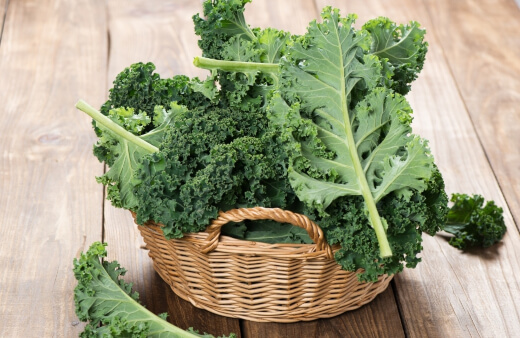
Kale is rich in vitamins, calcium, as well as beta carotene which are really good at making the immune system stronger which can be a necessary step during the winter.
Kale is a bit like cabbage and you can find a lot of varieties out there. There are many ways you can use kale, preparing it and cooking it. Fried, boiled, steamed or even served as a part of a salad.
Often kale is frozen before it is used for any cooking, since it happens to come out sweeter when the deal is done. Eating kale is a good way to raise your essential vitamins daily intake.
Growing kale at home can be an equally fun opportunity, as long as you keep some rules in mind. You can plant them anytime from early spring to early summer.
Add about one and a half cups of fertiliser per 7m or so of soil but only into the top few inches of soil and then plant the seeds about half an inch into this mix. Give it about 2 weeks and the seedlings will start growing.
Cabbages
Cabbages are found in a lot of forms, from standard cabbage to cone cabbage, red cabbage and more. It is unique due to its short stem and it happens to be perfect for soups, salads.
The greatest thing about cabbage is that it happens to be full of vitamin C, vitamin B, phosphorous, magnesium, as well as calcium.
The vitamins are working well for keeping your health up during the cold winter months, so make sure you are aware of their use.
Make sure you sow your cabbage seeds at home at about half an inch of depth, then keep them moist and thin them out to the spacing you need to make them work.
Fertilise the plants on a regular basis, especially after you’re transplanting and add some nitrogen when the cabbage is half grown. Similar to cabbages, brussels sprouts are also a member of the brassica family.
Check out our complete guide on how to grow brussels sprouts to learn more about it's varieties, as well as how to harvest and store them properly.
Arugula
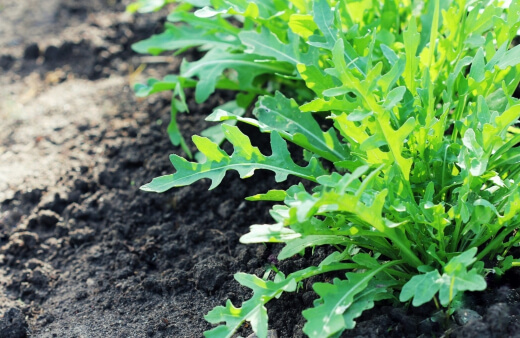
Using green leafy vegetables such as arugula is a good source of vitamins, as these are the same as cabbage, cauliflower and more. You can eat it raw or cooked, but in the end you may find it more palatable when eating it cooked with a bit of oil.
Arugula is rich in vitamins A, K, C, iron and calcium among other things. It is a really useful addition to your winter diet. When growing these, you’ll need to set out the germinated / young arugula plants about 30cm apart.
As the arugula flowers in late spring and early summer the flavor of the leaves will become more intense. As the plants grow larger their taste will get stronger and more pepper-like.
You can harvest the leaves of the arugula often enough to add some nice flavor to your salads.
Winter Squash
Using winter squash is a good way to ensure you have plenty of carotene, vitamin C, B1 as well as folic acid, potassium and plenty of fibers among other things.
You can grow this inside during the winter season, making gardening possible at least for homes outside the general urban areas. If you want to work on spacing and planting it at home, then you will need to sow squash seeds at about 7cm deep.
Space your squash in mounds or inverted mounds and thin out the weaker seedlings. In the rows you will need to plant about 2 squash seeds 25cm apart or so in rows a little over 1m apart.
This will allow your plants to run down the hill and away from the main stem. Inverted hills will help retain the moisture inside dry regions. At the end of the day you will have excellent results when gardening.
Growing Vegetables During Summer Time
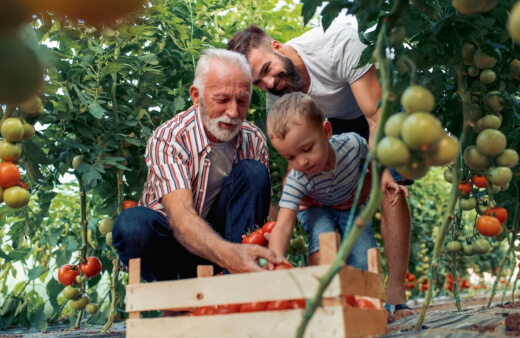
Growing veggies in summer is definitely a good choice. Plus, by the time autumn rolls around, when the time for gathering the harvest comes, you could be looking at a pretty good haul! Here are some vegetables to plant now.
Broccoli
Broccoli is grown in sunny regions so and will also needs a lot of water, in order to be strong and healthy. The only tip you should remember while choosing a place for planting broccoli is wind.
Broccoli can be damaged in windy places, so you need to choose some protected places from wind. When sowing seeds, sow a distance of about 40 cm between each plant.
In most parts of Australia, also keep an eye on caterpillars munching away at your crop. You can go from having enough to feed an army, to zip over night.
Broccoli looks great when it’s grown. This product also contains a huge amount of nutrients and vitamins, which makes it look just as good on our table.
Cucumber
Technically a fruit, but everyone eats cucumbers! It loves a lot of sun, high humidity and a well-prepared soil (with lots of compost).
Cucumber plants are resilient climbers. Vine breeds like to wind and twist around fences, posts or even other plants. While planting, you should put 2 seeds in each mound, keeping the distance equal to 40 cm between each.
Give the plant some kind of structure to grow up, or enough room in a bed to spread along the ground. In fact, if you don’t leave your cucumber plant enough space, it may choke other members of your garden. Ultimately, though, they’re easy to grow.
Potatoes

Potatoes are another popular product to grow in your garden. Maybe a vegetable, maybe not – but one thing is certain, they are definitely easy to grow! All you need to do is allow healthy, long (about 9-inch) sprouts to form.
But before planting, you should take care of the soil, making it full of organic nutrients. Cow poo is a perfect solution for this, though any other kind of compost is fine as well.
Stick them in frost-free ground and then wait. Your sprouts will climb up and up while your potatoes bulge beneath the surface.
Often, when potatoes are ready to be picked, parts of them become exposed above the soil. At that point you should pluck your potato from the ground and get ready to feast.
You should really pay attention to the health though – your seeding material must be ‘virus-free’, otherwise you’ll have not only have no potatoes now, but you’ll also struggle for years and years.
Check out our in-depth guide to growing potatoes or if you prefer, growing potatoes using grow bags.
Growing Your Own Fruit, Vegetable or Herb Garden at Home
Sometimes, do you look at your grocery bill at the end of each week and think about how you could save more money? You aren’t alone. The average Australian household will spend between $100-200 a week on food shopping alone. The worst thing is if you want to eat healthier, it will cost you a lot more.
There are ways you can save on your food bill each week by growing your own fruit and vegetable garden. The bigger your backyard, the more you can grow and save.
You might even produce an excess amount that you can give away or sell to others in your neighbourhood. Irrigation suppliers Sunshower Online recommend the following fruits and vegetables that you can grow effortlessly in your home.
Avocados
Avocados are a great for dishes such as guacamole and salads. The trouble is if you buy avocados from the supermarket, they will usually cost you $2-4 each.
You would be better off buying an avocado tree and planting it in your backyard. You can see a tutorial from Australian gardener Marty below.
In one year, an avocado tree could yield 100 avocados, saving you hundreds of dollars. They also contain natural fats that will improve your health.
Herbs
Nothing beats the taste of fresh herbs from the garden. Whether you live on a farm or in a small apartment, you will be able to grow herbs that you can use to add flavour when cooking your meals.
Some of the common herbs you can grow include thyme, basil, and rosemary. Check out this YouTube tutorial showing how you can grow your own herb garden at home.
Lettuce
The great thing about green leaf vegetables like lettuce is they can continue to grow even after you have used them once. The trick is to save the bulb and to place it in a glass of water.
Over the next couple of days (or weeks), new leaves will sprout. The more of these you harvest, the more lettuce you will continue to grow. You can see a video demonstration below.
Carrots
Carrots are extremely useful product, which can be consumed in many different ways – juicing, roasting, frying, or raw! Growing carrots in your garden is not so difficult, though you need remembering a few things.
- First of all, you should get rid of heavy stones and rocks in your soil – they may damage your carrots and slow down their growth.
- Second – good gardeners should pay attention to the drainage system, ensuring it allows the water to effectively drain from around the plants.
- Third – use some nitrogen-based food for plants, in order to make your carrots bigger.
For seeding just tap them out of a packet along a row and gently push them down into a deep bed or pot of loose soil. The looser the soil, the easier they will grow downwards!
Tough soil usually means gnarly, stunted looked carrots. You also need to make sure that they are fertilized well. They are fairly cheap to buy at the supermarket, however you can regrow the ones that you have purchased if they still have the leaf head on top.
Simply keep the head of the carrot and grow it in water, but this will only result in seeds for next season, not a new carrot. For more information, view the instructional video below.
We've discovered an innovative way to growing veggies in our home which is the Airgarden. Do you want to learn more? Here's our interview with Prue & Tom, Airgarden's founders.
Sweet Potatoes
If you’re going to grow potatoes, then sweet potatoes aren’t any harder. Cut a chunk off a shop-bought variety – ensuring that the chunk exhibits a few eyes – and plant below the surface the same as a potato. They are such a bountiful crop that you will be rewarded well for planting these.
Pumpkins
One of the easiest crops to grow and with such a large seed it’s a piece of cake to try and sow. You can even collect the seed from your own pumpkin, dry them out and plant in early spring to late summer.
Check out our comprehensive guide to growing pumpkins for everything you'll need to know.
Aubergine/Eggplant
Aubergines can be picked up as seedlings at most nurseries and planted as soon as the soil warms up. Within 8-12 weeks you’ll have a prolific harvest of eggplants that look great in the garden but are far better grilled and on your plate.
Planning a Veggie Patch
Before you grab your spade and start planting seedlings, there are some things you should consider. The dimensions of your patch can affect the quantity and type of veggies you can grow. By incorporating the following techniques, you can make your veggie patch more efficient and include veggies that normally need lots of space.
Succession Planting
This method of planting extends your harvest by staggering the planting of crops or planting varieties that have different maturing dates. There are four basic ways to increase your veggie patch harvest during a growing season. You can plant:
- The same veggie every 2 to 4 weeks: As you plant one crop, you can harvest another one
- Different veggies in succession: This works well for veggies with short growing seasons
- Two veggies that have different maturity dates: Climbing plants are often used to shelter cool weather plants from the summer heat
- Different varieties of the same veggie: This method helps your veggie patch produce corn, squash and other veggies throughout the growing season
Crop Rotation
Veggie patch gardeners can rotate crops to improve their soil’s fertility, control diseases and pesky insects. This reduces your reliance on fertilisers, pesticides and fungicides. Crop rotation makes gardening easier and improves the yield of your veggie patch.
Beans fix nitrogen in their roots and enrich the soil with nitrates for corn. You can rotate your bean and corn crops in the same plot. Tomatoes are an exception to the crop rotation rule.
You can grow tomatoes in the same location without depleting the soil or encouraging disease or insect problems. Crop rotation charts are a great tool for planning your veggie patch.
Growing Vegetables in Raised Garden Beds
A raised garden bed can make your veggie patch healthier, easier to maintain and more productive. The narrow width of raised beds allows you to work your veggie patch without walking on the soil.
This reduces soil compaction and allows the roots to breathe. The design also makes it easier for elderly and disabled people to work in their veggie patch without bending over. Raised beds use less water, fertiliser and compost than regular veggie garden beds.
Many studies have shown that raised garden beds can double the production of veggies. Retailers sell raised garden beds in various materials, depths and elevations. You can also construct a raised bed using a kit. Once your raised bed is in place, fill it with soil and plant your seedlings.
Growing Veggies Vertically
Latticework, nylon netting and climbing frames helps squash, melons, tomatoes, beans, cucumbers and other climbing plants grow vertically. Vertical gardening conserves space, provides better sunlight and improves air circulation.
Your veggies are more resistant to mildew diseases and are easier to harvest. You’ll need to position your supports near the veggies. They will send out tendrils that grasp the support and wrap around it. If you are growing heavy veggies, you need to use supports with sturdy posts.
Veggie patches are an ideal way to increase your gardening space, grow healthy veggies and save money.
Wrapping Up Our Guide to Growing Vegetables in Australia
My story is a testament to the fact that I believe anyone CAN improve their gardening skill if they have enough dedication and desire to do so. If you want to produce cheap and tasty homegrown veggies, with no hassle, try these in your garden this season!
Do you feel more inspired to start growing your own garden at home? With the amount of savings you will gain over your lifetime, it’s worth growing your own fruit, vegetable and herb garden at home. Take a chance and start growing vegetables today!
Published on August 10, 2021 by Nathan Schwartz
Last Updated on December 23, 2025

